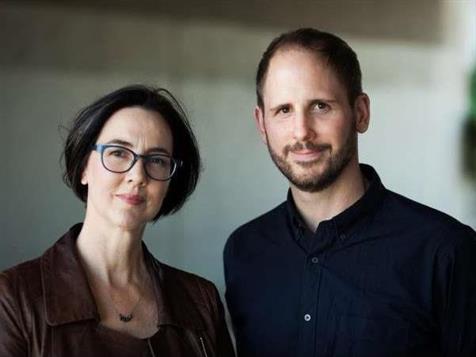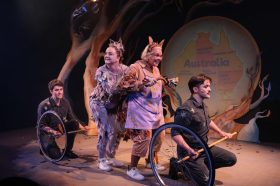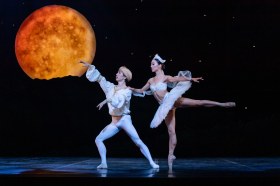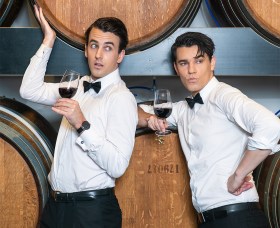Image: Another Other, Chamber Made Opera Photo: Sabina Maselli
Chamber Made Opera is an explorer. The company has always been known for pushing artform boundaries and crafting projects that experiment between music, opera, theatre, performance and design.
For myself, in a senior role within Chamber Made Opera, this charter of exploration is accompanied by the ongoing question of which artists should be in dialogue with the company at this particular time? And which infrastructure can best support these artists? In this way we are able to remain agile and responsive to the moment.
Given that the company exists outside of the frame of a conventional theatre company, or a conventional music company, or indeed a conventional opera company, it seems only fitting that the structure of operations itself is also subject to ongoing questioning and interrogation.
In early 2013 I proposed a new artistic model for the company’s Committee of Management to consider, one that would include four Artistic Associates (Sarah Kriegler, Tamara Saulwick, Christie Stott and Erkki Veltheim) from various disciplines, and artists who were well recognised within these disciplines. Each of them had varied experience of working in a small-to-medium arts organisation, and by and large the majority of their experience was as independent artists. They would assist with writing grants, be associate producers of works created within the company and contribute to the overall strategic direction of the company, as well as working with me to attract donors, philanthropic support and potential presenters for our works. All this said, their primary responsibility was art-making. So at the start of 2014, with multi-year funding for the organisation confirmed, we set to work.
I was the matchmaker of this group. Some knew each other, some not. It was a risk. What grew out of our dialogue and collaboration was a huge amount of mutual respect, a number of robust conversations about art, and most importantly the consideration of what role the company should play in the Australian and international arts landscape and the art we should be making. The experience was an experiment. Would these artists begin to make work together? Would their part-time engagement assist with their own independent practices and their wider professional development? Would their respective aesthetics and visions for the company align with one another? Would having artform knowledge and experience across music, sound, performance, theatre, digital arts and design allow this interdisciplinary company to take the next step in its artistic evolution?
The answer to many of these questions is yes. It has.
The Artistic Associate model allowed us to fully explore a commitment to a flat artistic team structure and deeply collaborative way of working. The results have been enormously fruitful with works such as Another Other, Captives of the City, and Permission to Speak coming out of this model, whereby an Associate collaborated with external artists to create new works. We extended both our artistic and audience networks via this model, which proved an essential part of our growth. And together we wrote a number of successful grants, attracted new supporters and penned a cracking strategic plan that will take the company forward into the coming years.
One challenge of the model has been the very part-time nature of personnel. This is suitable for project based work but does not always provide the kind of continuity of artistic conversation and planning required for a company of our size, particularly as we strive to evolve our work, our reach and our impact, digitally, nationally and internationally.
At the end of 2016 – the end of a 3-year funding cycle – I took some time to reflect on “The AA Model”, weighing up its pros and cons, what was working and what was not. I also took into consideration that some of the Associates were being pulled in different directions. Staying true to the company’s mantra of interrogation (organisational as much as artform), and in consultation with the Committee and staff, I elected to augment and evolve the artistic leadership model. One of the ways that I have dealt with the aforementioned challenge of lack of continuity is to invite Tamara Saulwick to step into the role of Artistic Director and work closely alongside me in my continued capacity as Creative Director. Tamara is an artist of immense talent and rigor. Her unique blend of skills and her genuine engagement in sound and music in her theatre-making make her the right choice. It is also the right time for her to take on a role such as this. This organisational structure is not a conventional approach. It’s an approach that builds on what we’ve learnt and the methodology that we’ve developed over the past three years.
The organisational structure and artistic framework of Chamber Made Opera will remain ‘flat’, meaning decisions are made via a process of consultation, discussion and collaboration. This is deliberate, and an alternative to more traditional, hierarchical structures, indeed ones where a CEO or one Artistic Director decrees the overarching vision, the works programmed and everyone falls in line behind that. This approach reflects Chamber Made’s broader commitment to finding new ways of working and creating new experiences for audiences.
Reflecting more widely, we are certainly not the only small arts company working in this way. Quite often this sector provides more flexible working environments within generally less hierarchal structures. Perhaps this is because collaboration is to an extent embedded within the DNA of performance making. It’s an ethos that I think other sectors would do well to adopt. Maybe even our politicians!

Chamber Made Opera’s new Artistic Director Tamara Saulwick and Creative Director/CEO Tim Stitz. Photo Credit: Pier Carthew.
Chamber Made Opera recently announced a shift in their artistic leadership model, announcing that Tamara Saulwick would step into the role of Artistic Director to work alongside Creative Director & CEO Tim Stitz.
Chamber Made Opera’s next work is an international collaboration with artists from Melbourne and Chengdu as part of Asia TOPA – Between 8 and 9 (Chengdu Teahouse Project)and will premiere at Castlemaine State Festival (21–25 March) and be followed by a season at the Melbourne Recital Centre (29 March – 1 April).





